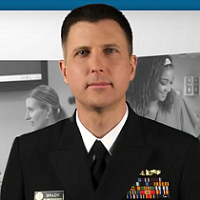 By Jeffrey Brady, MD, MPH, Director, AHRQ Center for Quality Improvement and Patient Safety
By Jeffrey Brady, MD, MPH, Director, AHRQ Center for Quality Improvement and Patient Safety
Twitter: @AHRQNews
For doctors, nurses, and other frontline care providers, treating patients with COVID-19 presents extreme challenges. Clinicians are working extra shifts under high-risk conditions. Suddenly, dedicated teams on “the front lines of care” face even more difficulties as they strive to protect their patients from safety threats.
As AHRQ’s patient safety research has shown, fatigue and stress in healthcare environments are incubators for errors. And the last thing anyone wants to do is add higher risks of patient harm on top of scenarios that are already challenged by COVID-19.
Communication challenges are a common factor in many different types of patient safety events, and that’s why I’d like to remind you about our flagship training program, Team Strategies and Tools to Enhance Performance and Patient Safety, or TeamSTEPPS®, and the pocket guide app that helps you keep the program’s principles at your fingertips.
TeamSTEPPS, developed nearly 15 years ago by AHRQ and the Department of Defense, is a widely recognized resource designed to protect patient safety by increasing teamwork among healthcare professionals. As I noted in a 2017 blog post, thousands of master trainers have attended AHRQ training sessions, with tens of thousands more having been trained. This valuable knowledge base among clinicians in the field is an important safety asset that we all should draw from continuously, especially during periods that threaten the resilience of our healthcare system.
Some key parts of TeamSTEPPS highlight the relevance and applicability of these resources:
- The TeamSTEPPS Essentials Course. This course is designed to teach TeamSTEPPS to staff who contribute essential information to the ongoing delivery of safe care.
- TeamSTEPPS 2.0 Fundamentals. TeamSTEPPS 2.0 highlights the evidence-based program’s key principles and concepts, enabling care teams to respond quickly and effectively to whatever situations arise.
- The TeamSTEPPS Pocket Guide App. This app puts the structured communication tools and checklists from the TeamSTEPPS Pocket Guide at clinicians’ fingertips on a smartphone or tablet. It’s available on the Apple App Store and on the Google Play Store.
- TeamSTEPPS Webinars. These archived web-based lesson plans walk users through the basics and intricacies of the team-training program. For the uninitiated, I recommend the July 2017 webinar, Introduction to the Fundamentals of TeamSTEPPS Concepts and Tools (Part 1 of 3).
As you can see, AHRQ offers practical approaches to support safety. One aspect that makes the curriculum unique is its use of pneumonic phrases that facilitate good teamwork practices. Two of these, in particular, could be particularly useful in keeping busy clinicians on the same page during these stressful times:
- SBAR—which stands for Situation, Background, Assessment, Recommendation and Request. This approach can be used to communicate critical information that may demand immediate action. Find out the situation by asking, “What is going on with a patient?” Then seek background by inquiring about any necessary context. Next, briefly assess matters by hazarding an educated guess as to what the problem is. Finally, recommend a course of action and request help if necessary.
- IPASS—is an updated approach for patient handoffs that can organize key information during critical and common interactions that are likely to be more frequent, stressed, and different from established processes and procedures. It stands for Illness severity, Patient summary, Action list, Situation awareness and contingency planning, and Synthesis by the receiver. A precursor to IPASS, “I_PASS_THE_BATON” is described in the pocket guide.
These structured communication approaches offer common footing for newly formed teams that may not have the benefits of established working relationships and familiarity that facilitate effective teamwork.
TeamSTEPPS is not the only AHRQ patient safety resource relevant to COVID-19. AHRQ’s online Patient Safety Network, or PSNet, has begun compiling resources to keep providers updated on emerging safety issues. Current PSNet resources include a primer on COVID-19 and Safety of Older Adults and several journal article abstracts, including one on crisis communication strategies. More safety resources are forthcoming, including an interview with patient safety experts addressing telehealth and patient safety.
Research shows that healthcare is safest when it’s provided by teams that work well together. Whether you’re new to TeamSTEPPS or an experienced user, I’m sure you’ll agree that providing safe, high-quality care has never been more important than now. I hope you’ll take a few minutes to review this curriculum.
This article was originally published on AHRQ Views Blog and is republished here with permission.
